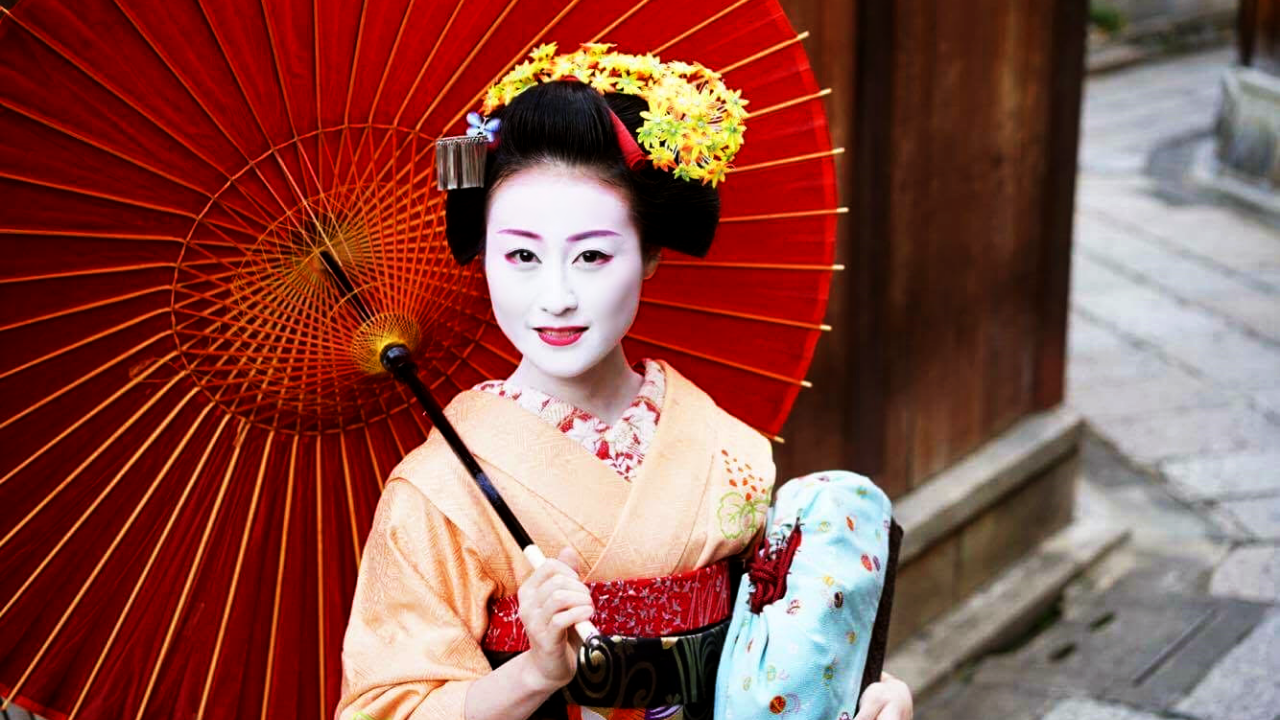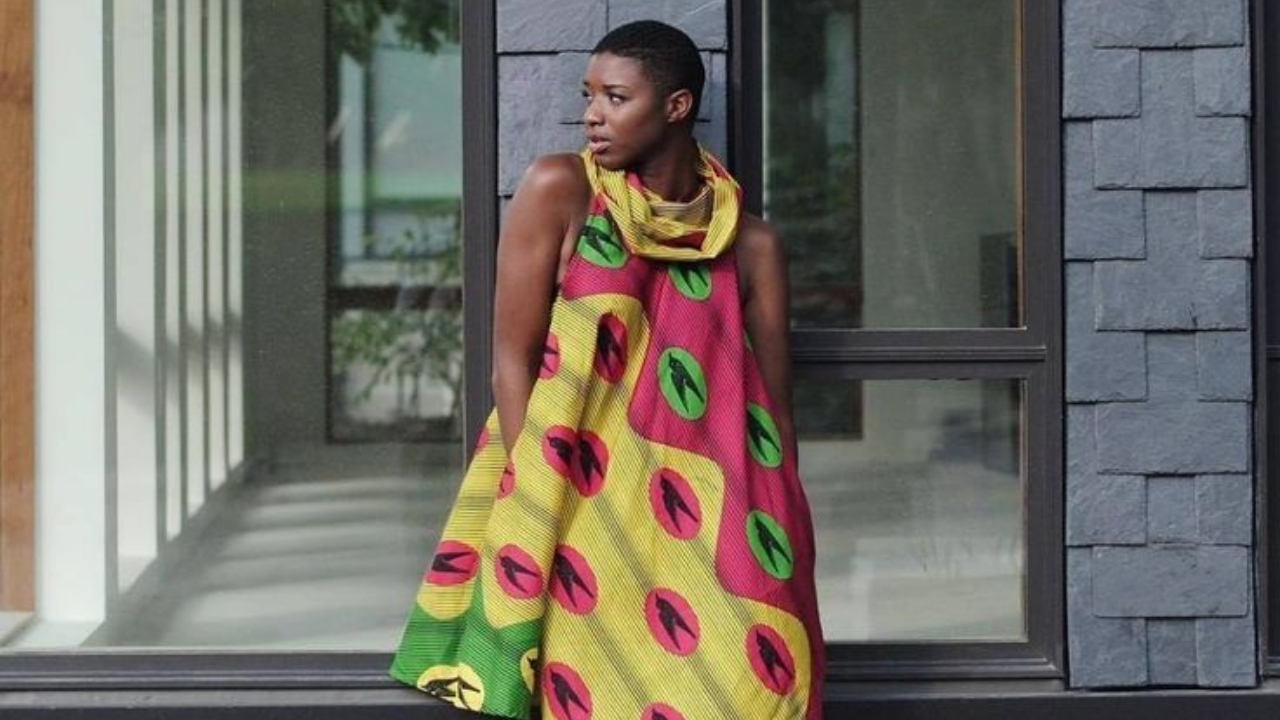The kimono isn’t a museum relic. It’s a living garment, quietly formal at weddings and tea ceremonies, wildly experimental on runways, and surprisingly relaxed on city streets. Today’s kimono culture is a mash-up of heritage craft, rental tourism, second-hand finds, and streetwear silhouettes that feel right at home with sneakers. Here’s a grounded look at what’s happening now, with practical tips if you want to take part respectfully.
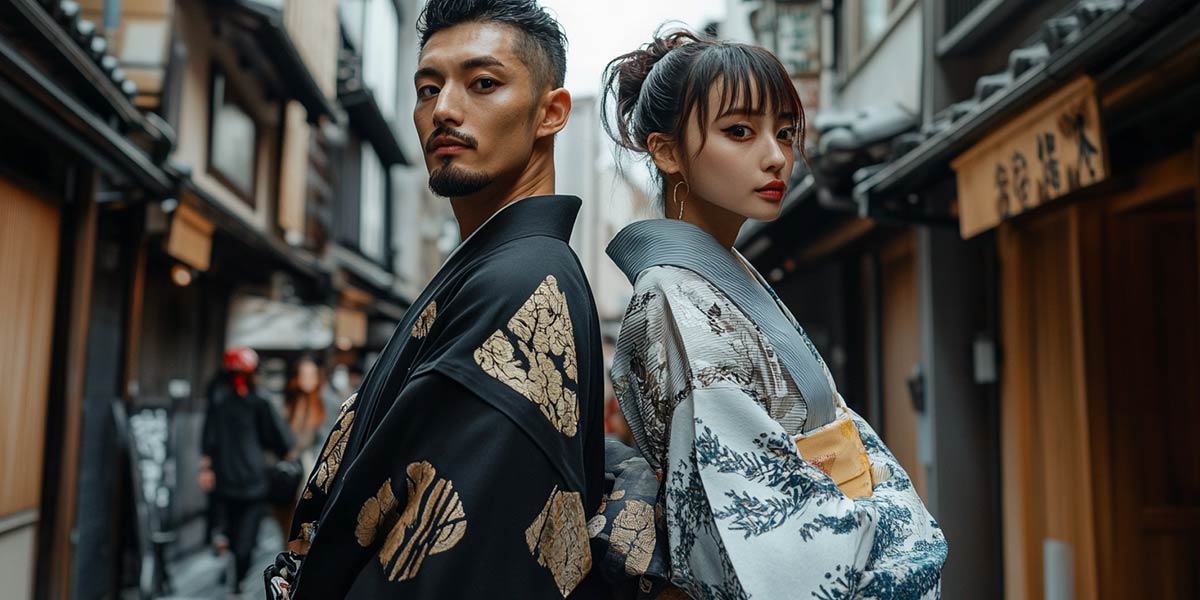
A quick primer (that’ll save you from awkward mistakes)
Kimono vs. yukata: A kimono is typically silk, structured, and layered with specific accessories. A yukata is an unlined cotton summer robe, lighter, simpler, and casual. If you wore one to a festival, that was likely a yukata.
Left over right, always: Wrap the left panel over the right. Right-over-left is reserved for dressing the deceased. Remember this, and you’ve already cleared the biggest etiquette hurdle.
Haori helps: Not ready for the full kit? A haori—a hip- or thigh-length jacket traditionally worn over a kimono layers easily over a T-shirt and jeans. It’s the simplest way to nod to the style without getting the formality wrong.
The state of the kimono business (yes, there’s real momentum)
Japan’s kimono retail market shrank for decades as everyday wear shifted to Western clothing, then began stabilizing after the pandemic dip. Research from Yano shows retail sales rebounding to ¥224 billion in 2023, a touch above 2022 and well above 2020’s low. That doesn’t mean everyone is buying brand-new silk, it means the ecosystem (new, rental, styling, photo studios, care services) is finding its feet again.
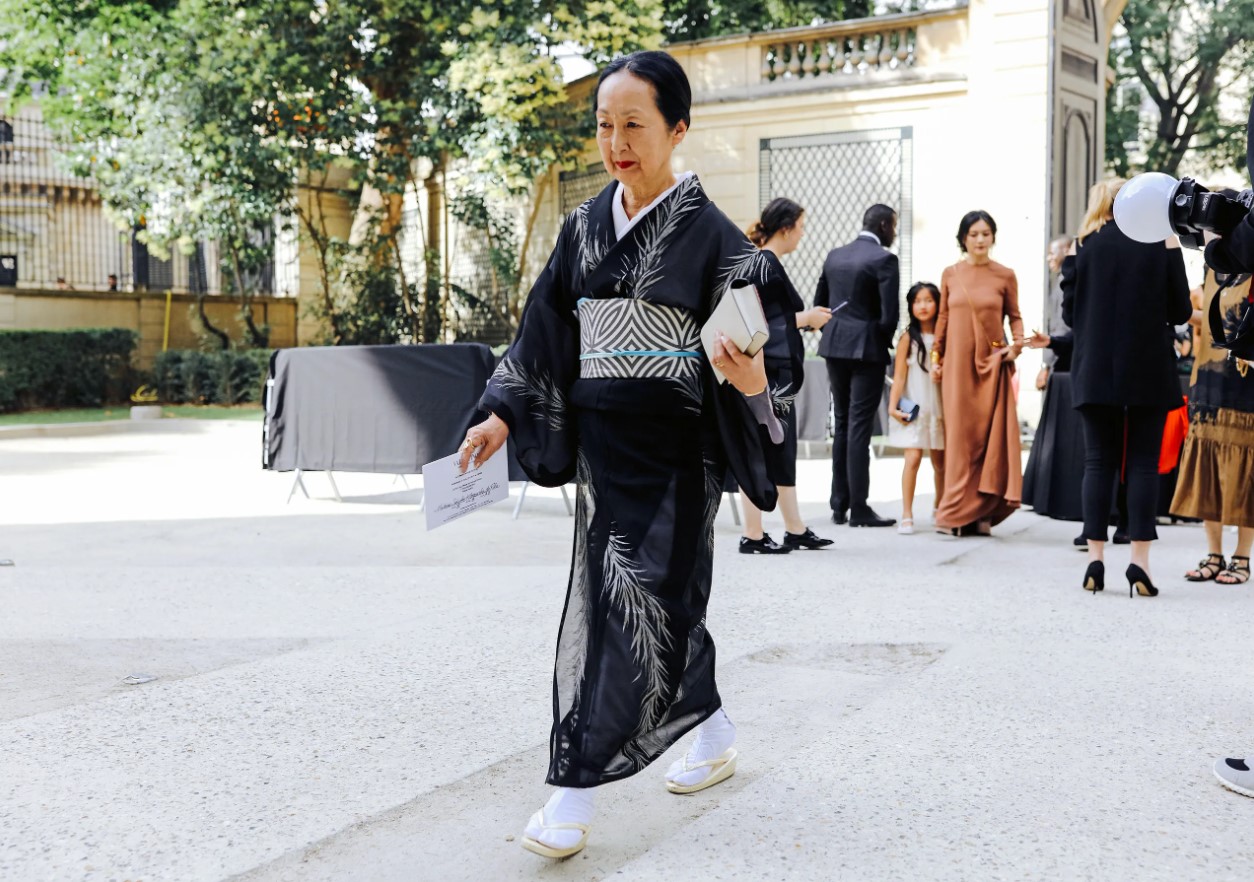
One pressure point is heritage production. In Kyoto’s famous Nishijin district, home to intricate obi and brocades, looms and weavers have fallen steadily; sales in 2008 were about 20% of their 1990 peak, with declines since. That’s why modern designers, rental shops, and second-hand markets matter: they keep demand (and skills) alive.
Rentals, tourism, and why Kyoto had to draw a line
The rental boom is real. Visitors book a morning fitting, stroll temple districts, and return garments by evening. Typical Kyoto rental prices for a basic set hover around ¥3,000–¥5,000 (more for premium fabrics, hair styling, or photo shoots). Popular shops list plans in the ¥4,000–¥8,000 range.
But popularity brings friction. In 2024, Kyoto restricted tourist access to private lanes in Gion after reports of visitors crowding and harassing geiko and maiko for photos (and even tugging at kimono sleeves). If you go, stick to public streets, keep a respectful distance, and ask before shooting.
From catwalk to sidewalks: the streetwear shift
Designers continue to mine kimono logic, flat yardage, straight seams, and dramatic sleeves for new silhouettes:
Runways: At Paris Fashion Week, Kenzo showed tailoring with kimono-like collars and wraps, blurring Savile Row precision with street sensibilities.
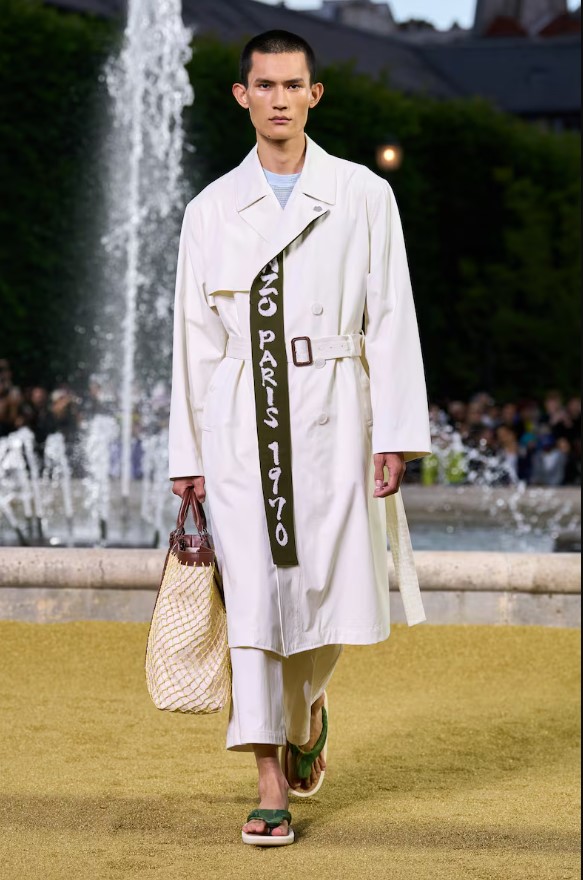
Modern kimono houses: Designer Jotaro Saito presents seasonal collections that treat kimono as fashion, not costume—think denim weaves, graphic motifs, and styling that reads contemporary.
Street labels: The haori and noragi jacket, easy, open-front layers, are now staples across Japanese and Western brands (Kapital, Visvim, Universal Works, and more). They offer the vibe without the ceremonial baggage.
Museums as accelerators: London’s V&A Kimono: Kyoto to Catwalk framed the garment as “dynamic and evolving,” tracing its influence from Edo-period ateliers to global fashion, making it easier for mainstream audiences to see kimono as current, not quaint.
Second-hand, upcycling, and sustainability
If you love the idea of a kimono but not the footprint (or price), the secondary market is your friend. Japan’s used-fashion sector is booming, and kimonos are a significant part of that scene. There’s also a growing upcycling movement: one project notes that only about 10% of collected second-hand kimonos make it back into wear, the rest risk disposal, so makers are turning vintage silk into sneakers, jackets, and accessories to extend the life of the cloth.
Culture, care, and wearing it right
Conversations about cultural appropriation surface often. Two fair principles can keep you on good ground:
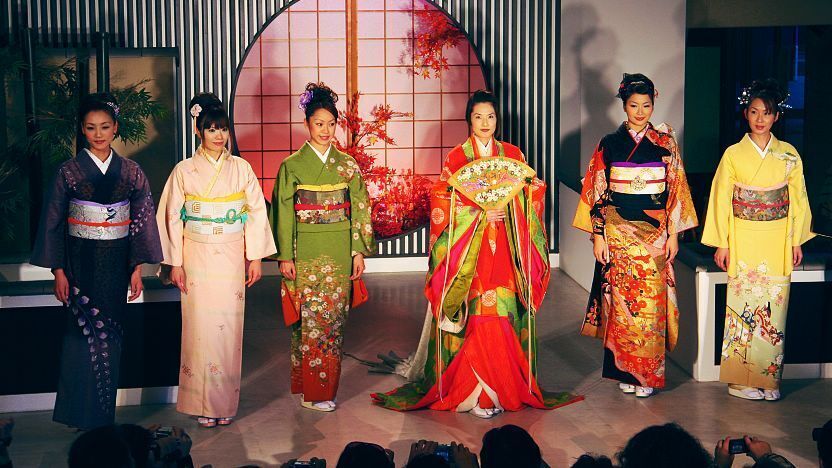
- Respect context. Public backlash in 2019 pushed a celebrity shapewear line to drop the name “Kimono,” a reminder that words carry cultural weight. Don’t treat the garment as a costume or a punchline.
- Listen to the community. Museums and media have hosted heated debates, but Japanese designers and curators consistently present the kimono as evolving and shareable when worn with understanding. That evolution is what keeps the craft alive.
- Practical etiquette checklist
- Wrap left over right. (Cannot be overstated.)
- Mind the setting. Ceremonial styles (furisode, tomesode) aren’t for a club night; a casual yukata or haori is safer for non-formal wear.
- Ask before photos—especially of geiko/maiko in Kyoto.
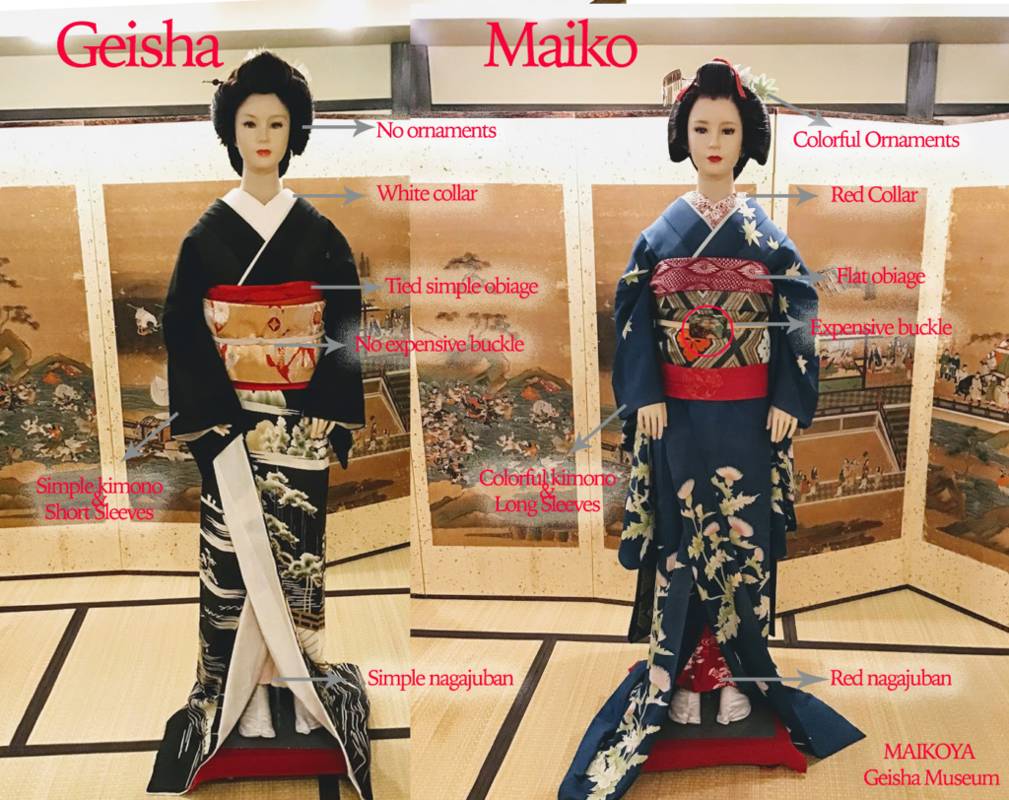
- Support artisans. If you buy, consider brands or studios linked to traditional weaving and dyeing; your purchase keeps workshops running. (The Nishijin case shows why demand matters.)
Want to try it? Three easy on-ramps
- Rent for a day. Book a reputable Kyoto shop; budget ¥4,000–¥8,000 for a full set, more with hairstyling or premium fabrics. It includes dressing help worth it.
- Start with a haori. It layers like a lightweight blazer and is fuss-free. Great over a plain tee, tailored trousers, and sneakers.
- Go see it up close. Exhibitions deepen your eye for fabric, cut, and motif—and they show how designers blend tradition and tech today.
A global, living garment
If you strip the kimono to its logical rectangles, balance, and fabric doing the talking, you’ll see why it keeps resurfacing. The pattern is ancient; the conversation is new every season. Market data says the industry is stabilizing. Runways keep borrowing their geometry.
Kyoto is setting boundaries to protect living culture. Second-hand and upcycling are giving old silks new lives. The thread that ties it all together is care: care for craft, for context, and for how you wear it.
And that’s the simplest way to be part of a kimono today, wear it like you mean it.
Post Comment
Be the first to post comment!
